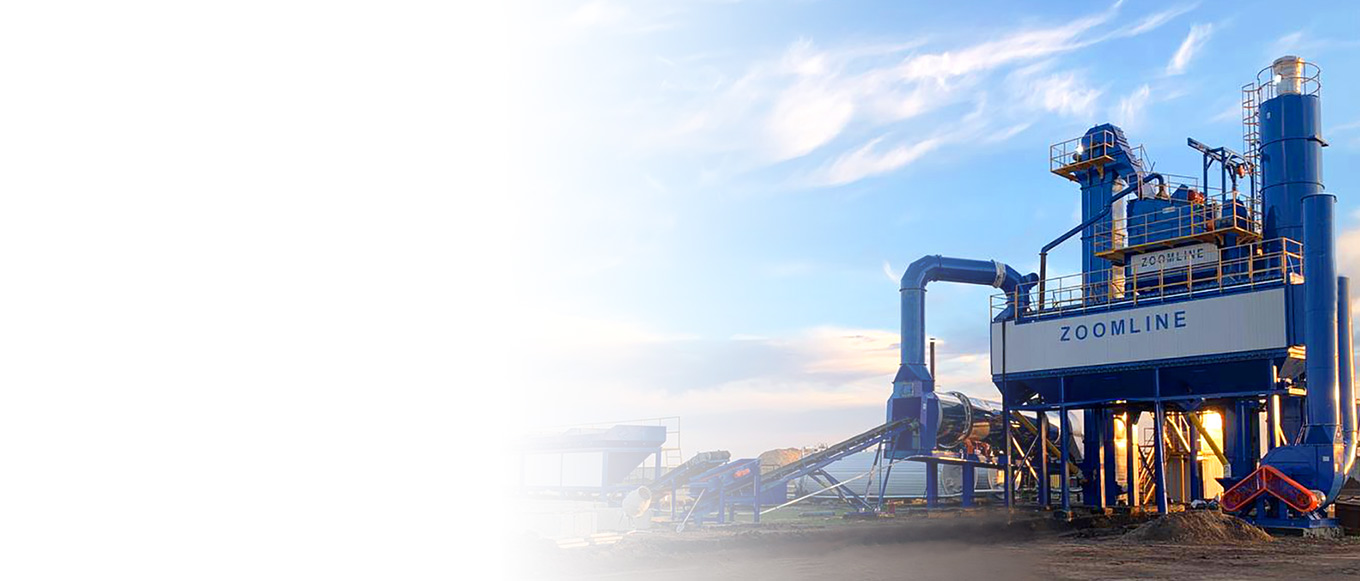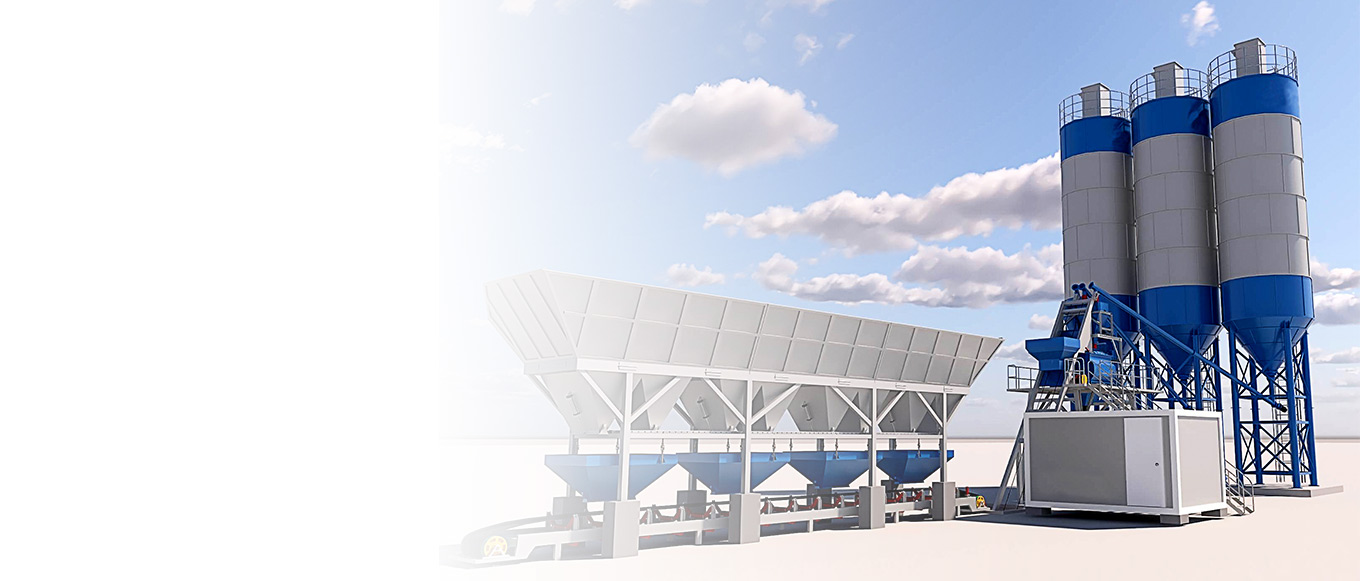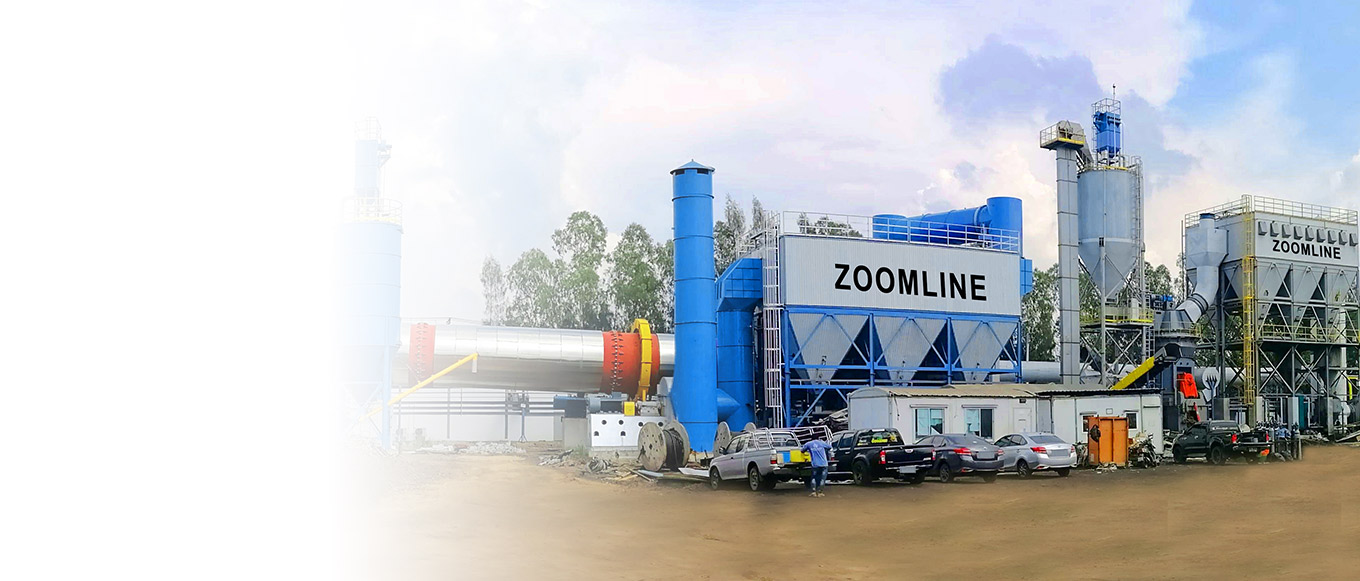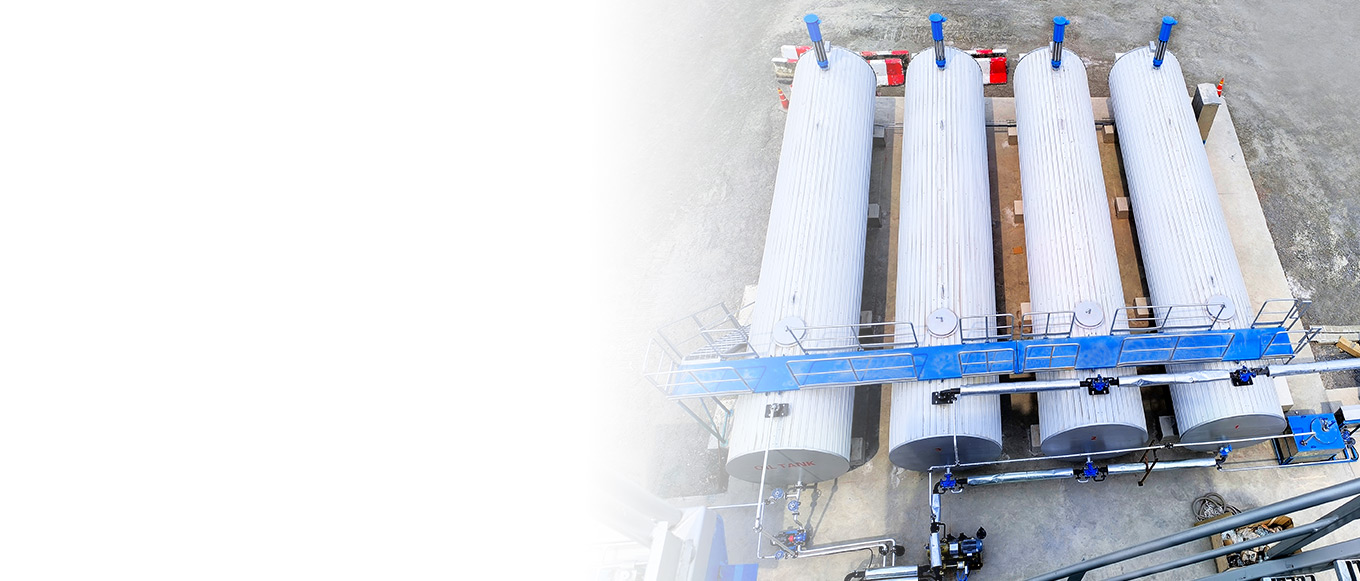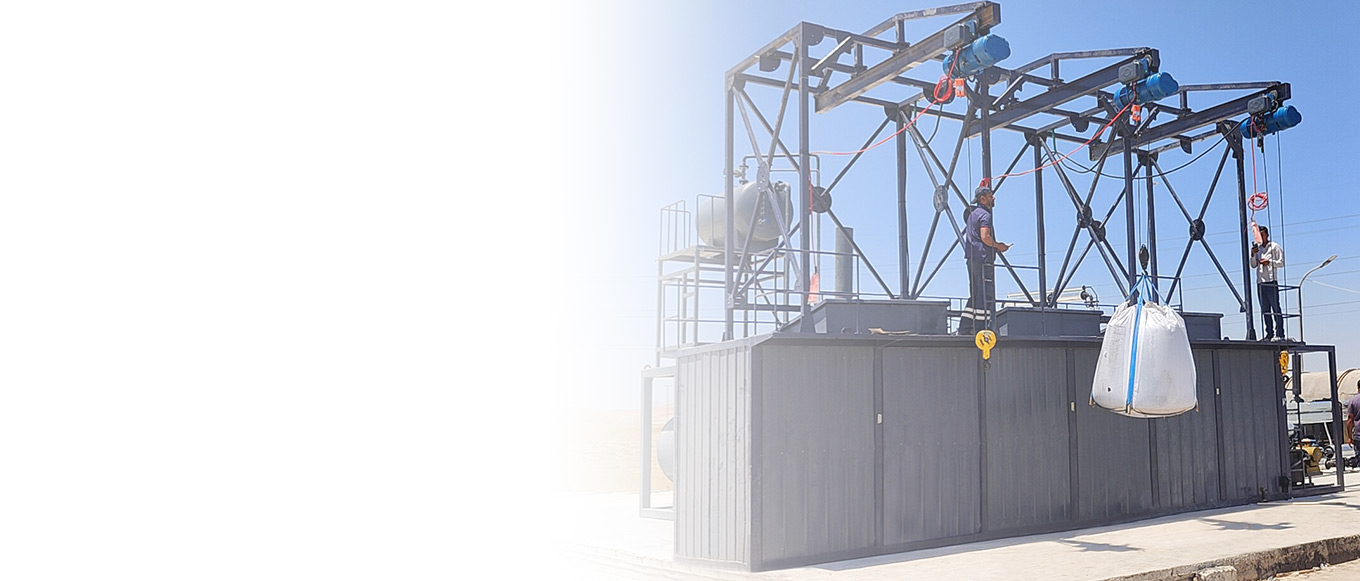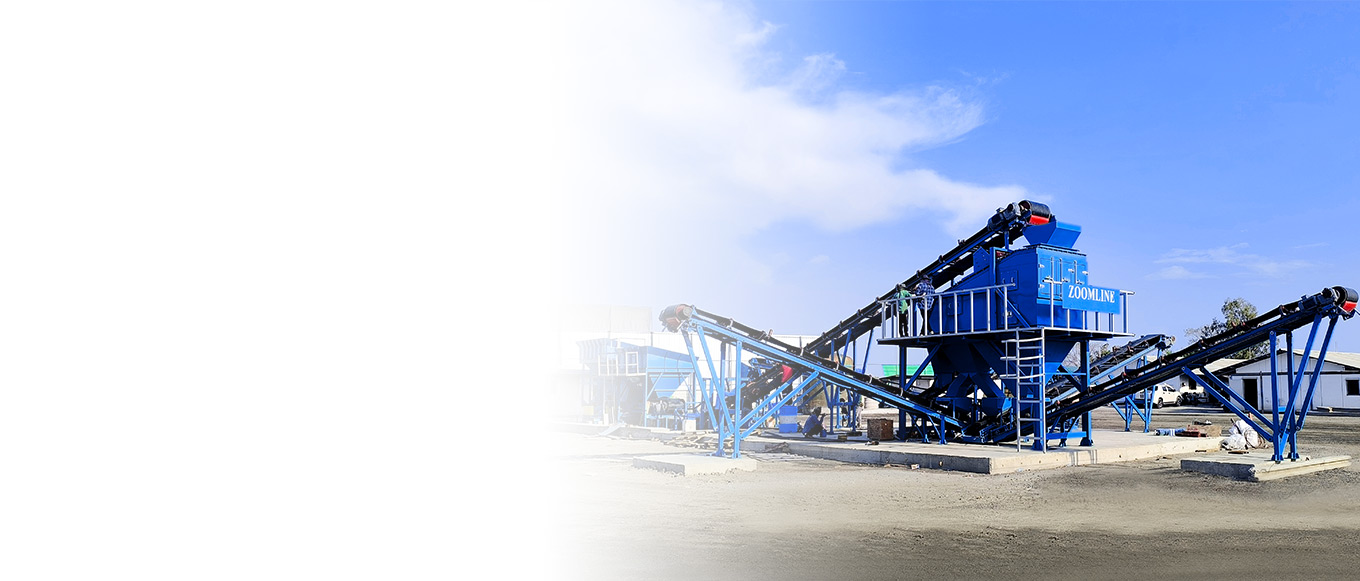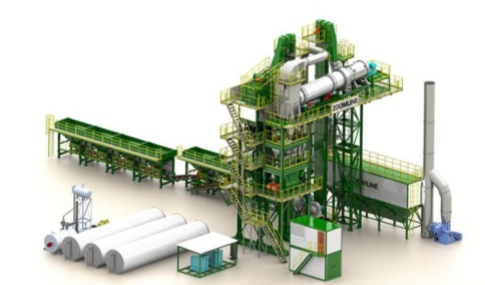Bitumen Mixing Plant Waste Overview
Asphalt mixing plant in the production and operation process will produce a variety of types of waste, mainly including finished asphalt concrete waste does not meet the technical specifications, powder and aggregate waste produced in the production process of raw materials, asphalt binder processing residue, and various impurities mixed in the production process. If these wastes are not treated scientifically, they will not only cause waste of resources, but also have multiple negative impacts on the environment and production operations. Therefore, it is of great practical significance to establish a systematic waste treatment system.
Cause analysis of waste generation
The causes of waste generation in asphalt mixing plant present diversified characteristics, including management omission in material storage link, such as deterioration of material performance caused by damp aggregate and abnormal asphalt storage temperature, and problems related to production technology, such as batch quality unqualified caused by inaccurate batching measurement and equipment calibration. At the same time, factors such as insufficient skills of operators, imperfect quality control processes and inadequate maintenance of equipment will also lead to increased waste generation. In addition, unreasonable disposal of old asphalt pavement materials in traditional production models will also aggravate waste accumulation.
The need for waste management
Scientific waste management is the core link for asphalt mixing plant to realize standardized operation. Untreated waste will occupy a large amount of production space, resulting in a decrease in site utilization; dust and harmful substances will pollute production equipment and the surrounding environment, increasing equipment maintenance costs; it will also endanger the health of operators and surrounding people, and damage the image of the company. From the perspective of resources, asphalt, aggregate and other raw materials belong to limited resources, and reasonable recycling of wastes can reduce resource consumption. Therefore, strengthening waste management is not only the inherent demand of enterprises to reduce costs and increase efficiency, but also the inevitable requirement of fulfilling social responsibilities.
Context of sustainable development
Under the background of global promotion of sustainable development, green transformation of building materials industry has become a consensus. Asphalt mixing plant is a key supporting facility of road construction, and its waste treatment mode is directly related to the ecological benefit of road engineering. By constructing a waste treatment system of “reduction, recycling and harmlessness”, it can not only reduce carbon emissions in the production process and reduce dependence on fossil resources, but also promote the road construction industry to form a circular economy model of “resource-product-renewable resources”, providing strong support for the sustainable development of the industry.

Types and classification of asphalt waste
finished asphalt concrete waste
This kind of waste is the most important waste type of asphalt mixing plant, which refers to the asphalt concrete abandoned after the completion of production, and the technical indicators do not meet the requirements of specification standards and technical documents. It is related to the proportion deviation of ingredients, uneven stirring, improper control of production temperature and other factors. This kind of waste has a high recycling value. If it can be treated scientifically, most of it can be converted into raw materials for production. It is the key object of resource recycling.
Powder and aggregate waste
Powder and aggregate wastes are generated during raw material pretreatment and production, including unqualified particles separated during aggregate screening, dust and particles scattered during material transportation and storage, and aggregates that lose their performance due to moisture and pollution. If such wastes are piled up at random, they are easy to spread under the action of wind and rain, resulting in site pollution and air dust. Resource recovery or safe disposal shall be realized through classified collection and targeted treatment.
asphalt binder residue
Asphalt cement waste residue mainly comes from asphalt storage tank cleaning, mixing equipment residue cleaning and other links. It is the waste residue formed by aging and deterioration of asphalt after high temperature use or long-term storage. Its performance cannot meet the requirements of road paving. Because asphalt has the characteristics of high viscosity and difficult degradation, if this kind of waste residue is directly discarded, it will cause long-term pollution to soil and water body, and it needs to be recycled or harmlessly disposed of through professional technology.
Other impurities generated during manufacturing
Other impurities produced in the production process are various, including waste parts replaced during equipment maintenance, sediments generated from production wastewater treatment, and foreign matters such as weeds and stones mixed into raw materials. Although the quantity of this kind of waste is relatively small, the composition is complex, so it is necessary to establish a classified collection system, and take targeted treatment measures such as recycling and safe landfill respectively to avoid affecting the overall production environment.
Impact of improper waste disposal
Site Pollution and Equipment Corrosion
Asphalt waste, especially powder and asphalt waste residue, which is randomly piled up, will form pollutant runoff under the washing action of rainwater, penetrate into the soil or adhere to the surface of production equipment. The acidic components and harmful substances will corrode key facilities such as mixing equipment and transmission pipelines, shorten the service life of equipment, increase the frequency of equipment failure, and pollute the production site, resulting in site hardening and overgrowth of weeds, affecting the standardization and safety of production operations.
Health hazards to employees and surrounding residents
Dust particles in asphalt waste will form dust under the action of wind, spread to the production area and surrounding environment, and stimulate respiratory tract after inhalation by human body. Long-term contact may cause chronic diseases such as pneumoconiosis. In addition, asphalt will release volatile harmful gases during high temperature or degradation, causing damage to human nervous system and respiratory system, seriously threatening the health of operators and surrounding residents.
Space occupation and waste of resources
If asphalt waste is not treated in time, it will continuously accumulate and occupy a large amount of production and storage space, resulting in crowded production sites and affecting the smooth development of material transportation and production processes. From the perspective of resources, asphalt, aggregates and other raw materials are limited resources, many wastes such as finished asphalt waste, incomplete deterioration of aggregates and so on still have recycling value, extensive treatment will cause a lot of waste of resources, increase the cost of raw material procurement.
Affect factory appearance and image
Clean and standardized production environment is the basic requirement of modern enterprise operation, random stacking of waste, scattered dust will make asphalt mixing plant presents a dirty scene, seriously affecting the appearance of the enterprise image. This will not only reduce employees ‘enthusiasm for work, but also leave a bad impression on customers and regulatory authorities, affect the market competitiveness and brand reputation of enterprises, and may even affect enterprises’ participation in business activities such as project bidding.
environmental pollution and ecological destruction
If harmful substances in asphalt waste penetrate underground, it will pollute groundwater environment and affect the quality of surrounding water resources; dust diffusion will cause air pollution and aggravate environmental problems such as regional haze; untreated asphalt waste residue is difficult to degrade in natural environment, occupying land resources for a long time and destroying soil ecological structure. These environmental problems will not only cause complaints from surrounding residents, but may also lead to enterprises violating environmental protection regulations and facing the risk of punishment.

Waste minimization strategy
Improved material handling and storage
Use cover storage to protect aggregate from moisture
Moisture content of aggregate will be abnormal, which will affect the mixing precision and mixing quality of asphalt concrete, and then produce waste. Therefore, it is necessary to standardize the aggregate storage site, adopt canopy, waterproof cloth and other covering facilities to ensure that the aggregate is not attacked by rain during storage. At the same time, establish a regular inspection system for aggregate moisture content, adjust the production ratio in time according to the inspection results, and avoid unqualified quality caused by moisture content problems.
Optimize asphalt storage temperature control
The storage temperature of asphalt directly affects its fluidity and performance. Too high temperature will lead to aging and deterioration of asphalt, and too low temperature will make asphalt thickening, increase transportation difficulty and affect mixing uniformity. The asphalt storage tank shall be equipped with accurate temperature control system to monitor the asphalt temperature in the tank in real time, and maintain the temperature in the optimal range through intelligent heating or insulation equipment, so as to avoid waste residue caused by abnormal temperature.
Implement accurate metering systems to avoid overuse
Inaccurate measurement of raw materials is one of the important reasons leading to unqualified quality of finished products. Excessive use of certain raw materials will not only increase production costs, but also directly lead to batch scrapping. Automatic precision metering system shall be introduced to weigh and measure aggregates, asphalt, fillers and other raw materials in real time to ensure that the raw material ratio of each batch meets the technical specifications. At the same time, the metering equipment shall be calibrated regularly to avoid measurement deviation caused by equipment error.
Optimized mixing and production technology
Use precision weighing and metering equipment
In the process of asphalt concrete mixing, the accuracy of raw material ratio directly determines the quality of finished products. Traditional and backward measuring equipment should be eliminated, and high-precision weighing sensors and intelligent measuring control systems should be adopted to realize dynamic and accurate measurement of various raw materials. For asphalt concrete of different specifications, preset precise proportioning parameters to ensure the stability of raw material dosage during mixing and reduce waste generated due to proportioning problems from the source.
Regularly calibrate equipment to ensure batch consistency
During the long-term operation of mixing equipment, it is easy to have problems such as wear of parts and parameter drift, which leads to differences in the quality of asphalt concrete in different batches and increases the risk of unqualified batches. It is necessary to establish a regular calibration system for equipment. According to the requirements of the equipment maintenance manual, the mixing host, metering system and conveying equipment shall be calibrated and debugged regularly to ensure that the equipment operating parameters meet the production standards and ensure the consistency of the quality of each batch of products.
Strengthen quality control and reduce waste batches
Establish a quality control system for the whole process, starting from the entrance inspection of raw materials, strictly detect the particle grading, mud content of aggregates, penetration and ductility of asphalt, etc., and resolutely refuse to enter unqualified raw materials. In the production process, random samples of asphalt concrete in mixing are taken, key indexes such as temperature and Marshall stability are detected, and production parameters are adjusted in time when problems are found. Before the finished product leaves the factory, the quality inspection shall be carried out again to prevent unqualified products from leaving the factory and minimize the generation of waste batches.
Regular maintenance of equipment
Daily inspections identify signs of wear
Establish equipment daily inspection system, arrange professional maintenance personnel to conduct comprehensive inspection on mixing plant equipment every day, focus on the wear of mixing blades, lining plates, conveyor belts and other easily worn parts, as well as the tightness of equipment connection parts and sealing parts. Through the combination of sensory inspection and instrument detection, potential problems such as equipment wear and leakage are found in time, records are made and timely maintenance is arranged to avoid small faults from expanding and causing equipment failures and production waste increases.
Ensure dryer burner efficiency
Aggregate dryer is the key equipment of asphalt mixing plant, its burner efficiency directly affects aggregate drying effect and energy consumption. If the burner efficiency is low, it will lead to insufficient drying of aggregates, excessive moisture content, and affect the quality of asphalt concrete. It is necessary to clean and maintain the burner regularly, check whether the nozzle, ignition system and fuel supply system are normal, replace the aging parts in time, ensure the full combustion of the burner, improve the thermal efficiency and ensure the drying quality of the aggregate.
Lubricate moving parts to improve performance
The moving parts such as the conveyor belt and the rotating shaft of the mixing machine of the mixing station will produce friction loss during operation. If the lubrication is not timely, it will aggravate the wear of the parts, reduce the accuracy and efficiency of the equipment operation, and even cause the equipment to jam. Establish equipment lubrication management system, clarify the lubrication cycle, lubricating grease type and filling amount of each moving part, arrange special personnel to be responsible for lubrication operation, ensure that each moving part is fully lubricated, and improve the operation stability and service life of equipment.
Advanced technology integration
Automatic control system real-time adjustment ratio
The introduction of fully automated production control system, the system can integrate raw material metering, mixing control, quality detection and other modules, through the sensor real-time collection of various production data, such as raw material dosage, mixing temperature, mixing time, etc. According to preset production standards and real-time data, the system automatically adjusts raw material ratio and mixing parameters to achieve precise control of the production process, avoid waste caused by human errors, and improve production efficiency.
Sensor monitoring Early anomaly detection
Various sensors, such as temperature sensors, pressure sensors, vibration sensors, etc., are installed in key equipment and production links of the mixing plant to monitor the operation status and production parameters of the equipment in real time. When the sensor detects abnormal parameters, such as too high or too low stirring temperature, abnormal vibration of equipment, etc., the system will immediately send out alarm signals to remind operators to troubleshoot problems in time, realize early detection and early treatment of faults and quality hazards, and reduce a large amount of waste caused by abnormal conditions.
Data analysis tools optimize production planning
Using big data analysis technology, systematic sorting and analysis of production data of mixing plants, including raw material consumption, waste production, equipment operating parameters, quality inspection results, etc. of each batch of production. Through data analysis, the rules and causes of waste generation are excavated, weak links in the production process are identified, and production planning is optimized, such as reasonable arrangement of production batches, adjustment of raw material procurement plans, optimization of equipment maintenance cycles, etc., to minimize waste from the management level.

Recycling and reuse technology
Application of recycled asphalt pavement material (RAP)
RAP Recovery Process Flow
Recycling of recycled asphalt pavement material (RAP) follows the core process flow of “collection-crushing-sifting-recycling”. Firstly, cutting and milling the old asphalt pavement and collecting waste pavement materials; then, sending the collected RAP to crushing equipment for crushing treatment, and removing impurities in the crushing process; then, classifying the crushed RAP by screening equipment to separate recycled aggregates with different particle gradations; and finally, mixing the treated recycled aggregates with new asphalt, recycling agents and the like in proportion to produce recycled asphalt concrete and complete resource recycling.
Treatment of Old Bitumen by Cutting and Rolling Technology
In the process of old asphalt pavement treatment, the choice of cutting and rolling technology directly affects the quality of RAP. For cutting operation, precise pavement cutting machine shall be adopted, and the cutting depth and width shall be controlled according to the damage degree and recycling demand of the old pavement to ensure the integrity of the cut pavement material; for rolling treatment, heavy roller shall be adopted to crush the cut old pavement, or special crushing equipment shall be used for fine crushing, so as to avoid unreasonable aggregate particle grading caused by excessive crushing and ensure the subsequent recycling effect of RAP.
Investment advice for modern recycling equipment
In order to improve RAP recycling efficiency and quality, enterprises should increase investment in modern recycling equipment. Priority shall be given to mobile asphalt pavement milling machines, which can realize on-site recycling and on-site treatment and reduce RAP transportation costs; intelligent crushing and screening equipment shall be introduced, and automatic impurity removal system and particle grading detection device shall be equipped to improve crushing and screening accuracy; meanwhile, asphalt recycling and mixing equipment shall be invested to realize accurate mixing of RAP and new raw materials, ensure the quality of recycled asphalt concrete, and support efficient operation of RAP recycling system from equipment level.
Advantages of recycling resources
Promoting efficient use of limited resources
Asphalt, aggregates, etc. are non-renewable limited resources. Traditional road maintenance mostly uses the “superposition method” to directly lay a new asphalt layer on the old road surface, resulting in the inability to recycle the old asphalt materials and waste of resources. Through RAP recycling, waste asphalt pavement materials are converted into recycled raw materials and reused for road construction, effectively reducing the demand for new asphalt and new aggregates, realizing efficient recycling of limited resources and alleviating the contradiction between supply and demand of resources.
Comparative analysis between traditional superposition method and traditional superposition method
Although the traditional “superposition method” is simple in construction, it has many disadvantages: firstly, the damaged part of the old pavement is not completely treated, which easily leads to rapid damage of the new pavement layer and short maintenance effect; secondly, the old asphalt material is abandoned, and the resource utilization rate is low; thirdly, the height of the pavement increases after superposition, and it is easy to produce pavement steps, which affects the driving safety. RAP recycling mode can not only solve the problem of waste of old materials, but also repair the diseases of pavement base, improve the overall quality of the road and avoid the generation of pavement steps by thoroughly treating the old pavement. The comprehensive benefit is far better than that of the traditional superposition method.
Life cycle costs reduced by approximately 5%
From the perspective of life-cycle cost analysis, RAP recycling model can significantly reduce road construction and maintenance costs. This mode reduces the procurement cost of new raw materials, reduces the transportation and disposal cost of used materials, and extends the service life of roads due to the improvement of road maintenance quality, reducing the frequency of subsequent maintenance. Compared with the traditional “superposition method”, the whole life cycle cost of road engineering using asphalt recycling technology can be reduced by about 5%, and the economic advantage is obvious.
Environmental Impact Assessment
Reduce the use of new materials to reduce CO2 emissions
The most significant environmental benefit of RAP recycling is the reduction of carbon emissions. The production of new asphalt needs to go through petroleum exploitation, refining and other links, and the production of new aggregate needs to go through mining and crushing processing, all of which will produce a large amount of CO2. By using RAP to replace part of new raw materials, the production demand of new asphalt and new aggregate can be reduced, and then CO2 emission in the production process can be reduced, and environmental pollutants generated in the process of stacking old materials can be reduced, realizing double benefits of environmental protection and resource utilization.
Carbon footprint optimization for petroleum refining processes
As a by-product of petroleum refining, asphalt production process is closely related to petroleum refining. Petroleum refining process will produce a lot of CO2 and other pollutants, which is an important source of carbon footprint. RAP recycling reduces the demand for new asphalt, indirectly reduces the scale of petroleum refining, thereby reducing carbon emissions and pollutant emissions during the refining process, optimizing the carbon footprint of asphalt production, and helping to achieve the “carbon emission reduction” goal.
Transport and production emission control
RAP recycling adopts the mode of “on-site recycling and nearby treatment”, which can greatly reduce the transportation distance of new raw materials from the origin to the mixing station and the transportation distance of old materials from the road surface to the landfill, thus reducing the fuel consumption and exhaust emissions of transportation vehicles. At the same time, modern asphalt recycling mixing equipment adopts efficient combustion technology and tail gas treatment system, which can effectively control the exhaust gas emission in the production process, further reduce the impact on the atmospheric environment, and realize the emission control of transportation and production links.
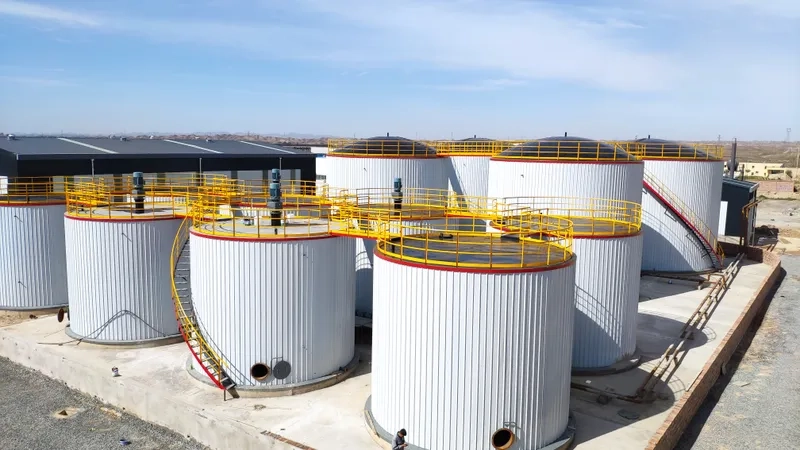
Economic and financial benefits
reduce raw material costs
Raw material costs are a core component of asphalt mixing plant operating costs, and RAP recycling and waste reduction measures can significantly reduce these costs. By using RAP to replace part of new aggregate and new asphalt, the purchase amount of new raw materials is directly reduced, while RAP as waste materials, procurement or recycling costs are much lower than new raw materials; at the same time, waste minimization strategy reduces raw material waste, improves raw material utilization rate, avoids additional consumption of raw materials caused by waste generation, and effectively reduces raw material costs from two aspects.
Reduce production and energy expenditures
Optimizing production technology and equipment maintenance measures can effectively reduce production and energy expenditure. Automatic production system improves production efficiency and reduces labor costs; regular maintenance of equipment reduces the probability of equipment failure and reduces maintenance costs; the application of efficient burners and energy-saving motors reduces fuel and electricity consumption and reduces energy costs. In addition, the reduction of waste disposal volume also reduces the disposal costs of waste transportation and landfill, further reducing the total production cost.
Improve profitability and competitiveness
The reduction of cost directly drives the improvement of enterprise profit margin, while RAP recycled asphalt concrete produced by RAP recycling has more advantages in price on the premise that the quality is not lower than that of traditional products, which can attract more customers and expand market share. At the same time, the green and environmentally friendly production mode conforms to the development trend of the industry, which can help enterprises establish a good brand image, gain competitive advantages in project bidding and cooperation negotiations, and further enhance the profitability and market position of enterprises.
Reduce downtime and rework costs
Equipment failure and product quality problems are the main reasons for production downtime and rework. Perfect equipment maintenance system and full-process quality control system can effectively reduce the frequency of equipment failure and avoid production interruption caused by equipment problems; at the same time, accurate production control reduces the number of unqualified products and avoids rework caused by product quality problems. The reduction of downtime and rework costs not only reduces production costs, but also ensures the smooth completion of production plans and improves the operational efficiency of enterprises.
Market advantages of sustainable solutions
With increasingly stringent environmental policies and increasing market demand for green products, asphalt mixing plants with sustainable waste treatment solutions will gain significant market advantages. Government departments are increasingly inclined to choose environmentally friendly and resource-recycling enterprises in bidding for road construction projects; at the same time, the attention of all sectors of society to environmental protection issues is constantly increasing, and customers are more willing to choose products and services that conform to the concept of green development. The waste recycling and reduction measures implemented by enterprises are an important manifestation of responding to market demand and can bring more market opportunities to enterprises.
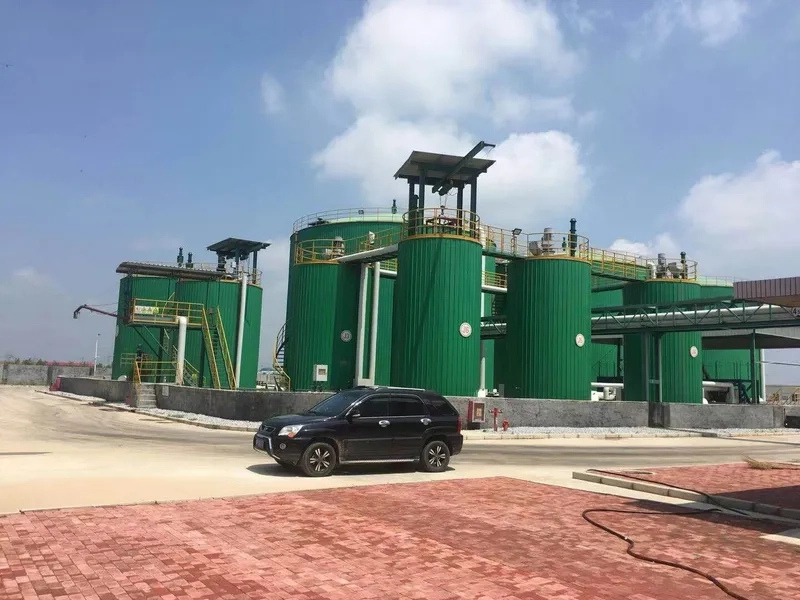
Energy efficient technology and automation
Application of advanced control systems;
Real-time monitoring of temperature and fuel consumption
The advanced control system realizes real-time monitoring of temperature and fuel consumption in the production process by installing sensors in key links of the mixing plant. In the aggregate drying process, monitor the aggregate temperature at the outlet of the dryer and the fuel consumption of the burner; in the asphalt heating process, monitor the temperature and energy consumption of the asphalt storage tank and heating equipment. The system transmits the monitoring data to the control center in real time, providing accurate operating parameters for operators, facilitating timely adjustment of operations and avoiding energy waste.
Automatic adjustment of drying drum temperature
Drying drum is the core equipment of aggregate drying, its temperature control directly affects drying effect and energy consumption. The advanced control system can dynamically adjust the drying drum temperature by automatically controlling the fuel supply and blast intensity of the burner according to the real-time monitored aggregate moisture content, feed rate and outlet temperature. When the production load decreases or the aggregate moisture content decreases, the system automatically reduces the drying drum temperature to avoid energy waste caused by excessive heating; when the load increases, the temperature is raised in time to ensure the drying quality.
Reduce human error and improve efficiency
The traditional manual operation mode is easy to cause operation errors due to factors such as lack of experience and lack of responsibility of operators, such as improper temperature control, deviation of raw material ratio, etc., which will not only produce waste materials, but also increase energy consumption. The advanced control system realizes automatic control of the production process, reduces the dependence on manual operation, and avoids production problems caused by human error. At the same time, the precise control capability of the system improves production efficiency, shortens production cycle and further reduces energy consumption per unit product.
Efficient motor and drive upgrades
Power Optimization of Conveyor and Mixer
Conveyor, mixer and other equipment motor is the main power consumption source of mixing plant, traditional motor power redundancy, low efficiency and other problems. By upgrading the traditional motor to an energy-efficient motor, the motor power consumption can be reduced on the premise of ensuring the operation performance of the equipment. For example, the high-efficiency motor adopts optimized electromagnetic design and structural design, which reduces the iron loss and copper loss during the operation of the motor and improves the energy conversion efficiency, especially in the long-term continuous operation of the conveyor and mixer.
Long-term energy bill savings calculation
Although the initial investment for efficient motors and drives is higher than for conventional equipment, significant energy cost savings can be achieved in the long run. Take a traditional motor with a power of 100kW as an example, its efficiency is about 85%, while the efficiency of high-efficiency motors can reach 95%. If the annual running time of the equipment is 8000 hours and the electricity price is 0.8 yuan/kWh, the annual electricity cost can be saved: 100×8000×(1/0.85 – 1/0.95)×0.8≈ 78,000 yuan. As the uptime increases, the energy savings accrue, resulting in long-term cost savings for the business.
Low Power Design with Performance Maintenance
Efficient motors and drive systems are designed with low power consumption to reduce energy consumption while maintaining or even improving equipment performance. Its core technologies include using high efficiency bearings to reduce friction loss, using high magnetic permeability materials to reduce iron loss, optimizing winding design to reduce copper loss, etc. In addition, some high-efficiency drive systems are equipped with intelligent speed regulation functions, which can automatically adjust the speed according to the equipment operating load, reduce the speed when the equipment is lightly loaded, further reduce energy consumption, and achieve an optimal balance between performance and energy consumption.
Employee training and operational optimization
Waste reduction technology training
Employees are direct participants in the production process, and their operational behavior directly affects the amount of waste generated. Enterprises shall organize regular training on waste reduction technology, including the hazards of waste generation, the importance of waste reduction, waste control skills in various production links, etc. For example, for raw material treatment, train employees how to correctly judge the moisture content of aggregates to avoid the deviation of proportion caused by misjudgment of moisture content; for mixing, explain the influence of mixing time and temperature control on product quality, improve the accuracy of employees ‘operation, and reduce waste generation from the human factor level.
Quality control educational measures
Quality control is the key to reduce waste batches. It is necessary to improve employees ‘quality awareness and operation ability through systematic quality control education. Regular quality control special training shall be conducted to explain the quality standards, inspection methods, identification and treatment of quality problems of asphalt concrete; employees shall be organized to participate in quality inspection practical operation training to improve their judgment ability on quality problems; the management system of “quality responsibility to each person” shall be established to clarify the quality responsibilities of employees in each position, and the quality performance shall be linked with performance appraisal to stimulate the enthusiasm of employees to participate in quality control.
Automation system operation skills upgrade
The efficient operation of advanced automation system depends on the skilled operation of employees, so it is necessary to strengthen the training of employees ‘operation skills of automation system. The training contents include the basic principle, operation process, parameter setting, troubleshooting, etc. of the system. The technicians of equipment manufacturers are invited to give on-site guidance. Through the combination of theoretical explanation and practical operation training, employees can master the system operation method skillfully. At the same time, the system operation assessment system shall be established, and the system can be operated only after passing the assessment, so as to avoid abnormal operation of the system due to improper operation and affect the waste reduction effect.
Practical Guide to Efficient Material Handling
For the material handling process, carry out efficient material handling practice guidance activities to improve the material management ability of employees. Organize employees to learn the standard requirements for material storage, such as classification storage methods for different types of aggregates, temperature control skills for asphalt storage, etc.; guide employees how to correctly operate material conveying equipment through on-site demonstrations to avoid material scattering and waste; establish a material consumption registration system to encourage employees to put forward reasonable suggestions for material saving, and reward suggestions with remarkable results, thus forming a good atmosphere of “everyone participates in material saving”.
Implementing best practices in waste management
Scientific classification and storage strategy
Establish a scientific classification system for asphalt waste, classify waste into recyclable (such as finished asphalt waste, RAP, qualified aggregate waste, etc.) and non-recyclable (such as waste parts, severely polluted waste residue, etc.) according to waste type, composition and recycling value, and set up special classified storage areas with clear signs to avoid mixed storage of different types of waste. For recyclable wastes, targeted storage measures shall be taken according to their characteristics, such as sealing and storage of finished asphalt waste to prevent aging, moisture-proof storage of powder materials to avoid dust emission, so as to ensure the recycling value of wastes.
Standardization of waste recovery processes
Formulate standardized waste recovery process, clarify the operation specifications, responsible subjects and quality requirements of each link. For example, RAP recycling process needs to clarify the operation standard of cutting and milling, particle grading requirements of crushing and screening, quality inspection indicators of recycled raw materials, etc.; the recycling process of finished asphalt waste needs to specify the time node of waste collection, transportation mode, mixing ratio with new raw materials, etc. Through process standardization, the waste recycling process is ensured to be carried out in an orderly manner, the recycling efficiency and quality are improved, and the waste of recycled resources caused by process chaos is avoided.
Environmental monitoring and compliance checks
Establish a regular environmental monitoring and compliance inspection mechanism, regularly monitor the ambient air, soil, water quality and other environmental indicators around the mixing plant, and assess the impact of waste treatment process on the environment; at the same time, conduct compliance inspection on the operation of waste treatment facilities and waste discharge according to environmental protection regulations and industry standards. Environmental monitoring and inspection files shall be established, rectification measures shall be formulated in time for problems found, rectification time limit and responsible person shall be specified, waste treatment shall meet environmental protection requirements, and punishment risk due to illegal operation shall be avoided.
Case study: reference for developing country applications
In some road construction projects in developing countries, the application of asphalt recycling technology has achieved remarkable results. The traditional road maintenance in these countries mostly adopts “superposition method”, which leads to a large amount of waste of old asphalt materials, high maintenance cost and poor maintenance effect. After introducing asphalt recycling technology, RAP is recycled to produce recycled asphalt concrete, which not only reduces the import dependence of new raw materials, reduces the cost of road maintenance, but also improves the quality of road maintenance and prolongs the service life of roads. The experience shows that the key to successful promotion of asphalt waste treatment mode is to select suitable recycling equipment and recycling technology, strengthen staff training and process management according to local actual conditions.
Actual effect of pavement quality improvement
After asphalt recycling technology and waste reduction measures were adopted, the pavement quality was significantly improved. Compared with the pavement maintained by the traditional “superposition method”, the pavement paved with RAP recycled materials has completely treated the diseases of the old pavement base, avoiding the problem of “small diseases dragging into serious diseases”, and the pavement flatness and bearing capacity have been significantly improved; at the same time, accurate production control ensures the quality stability of asphalt concrete and reduces the occurrence of road cracks, ruts and other diseases. The actual monitoring data show that the service life of pavement paved with this mode can be extended by more than 30%, and the frequency of subsequent maintenance can be reduced by 40%, which fully reflects the improvement effect of waste management on pavement quality.
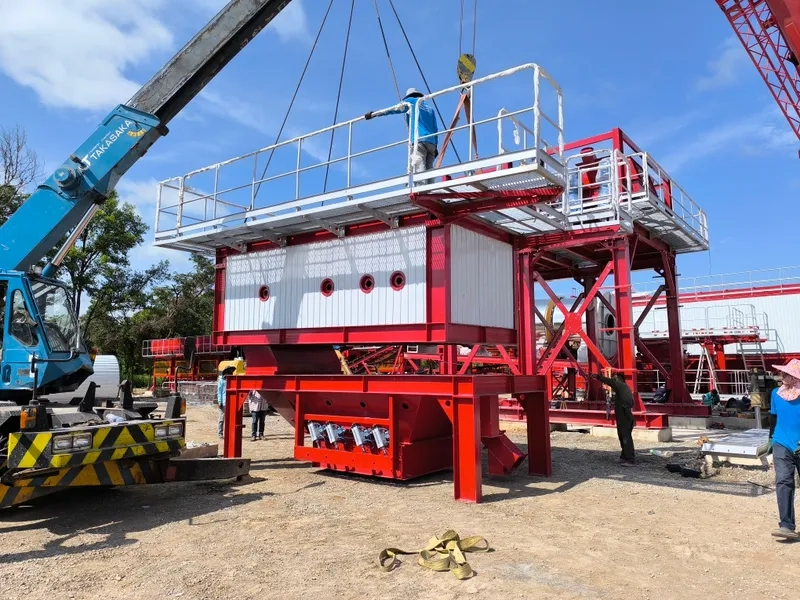
conclusion and prospect
Waste Management Summary
Waste management of asphalt mixing plant is a systematic project, which needs to start from multi-dimensions such as technology, equipment, management and personnel to construct a waste management system of “prevention first, recovery priority and whole process control”. Waste reduction is achieved by improving material handling and storage, optimizing production technology and strengthening equipment maintenance; waste recycling is achieved by promoting RAP recycling technology; and green production is achieved by introducing automatic control systems and efficient energy equipment. Practice shows that scientific waste management can not only reduce environmental pollution, but also reduce production costs, enhance market competitiveness, and achieve a win-win situation of economic and environmental benefits.
Future technology development trends
In the future, asphalt mixing plant waste treatment technology will develop in the direction of intelligence, high efficiency and environmental protection. In terms of intelligence, AI technology will be deeply integrated into the production control system to realize autonomous optimization of production parameters and predictive maintenance of failures; in terms of high efficiency, new crushing and screening equipment and recycling technology will further improve RAP recycling utilization rate and recycled material quality, and it is possible to realize 100% RAP recycling. In terms of environmental protection, new recycling agents and environmentally friendly asphalt materials will reduce the emission of harmful substances, exhaust gas treatment technology will achieve near-zero emission of pollutants, and promote the asphalt mixing plant to move towards the goal of “zero waste and zero pollution”.
Policy recommendations and industry appeals
In order to promote the overall improvement of waste management level of asphalt mixing plant, it is suggested that relevant departments issue targeted policies and measures: firstly, strengthen support for research and development of waste recycling technology and equipment, encourage enterprises to invest in environmental protection technology and equipment by means of financial subsidies and tax preferences; secondly, improve the quality standards and application specifications of asphalt recycled materials, and provide policy basis for the promotion and application of recycled materials; Third, strengthen environmental protection supervision, clarify environmental protection requirements for waste disposal, and increase penalties for illegal enterprises. At the same time, enterprises in the industry are called upon to strengthen technical exchanges and cooperation, jointly promote innovation and promotion of waste treatment technologies, and lead the green development of the industry.
Long-term value of sustainable bitumen production
The long-term value of sustainable asphalt production model is not only reflected in cost savings and competitiveness enhancement at the enterprise level, but also reflected in multiple benefits at the social and ecological levels. From the social perspective, this model improves the quality of road construction, ensures driving safety, reduces the impact of road maintenance on traffic, and improves the level of public services; from the ecological perspective, through resource recycling and carbon emission reduction, it helps to achieve the goal of “carbon peak and carbon neutralization” and protects the ecological environment. With the deepening of the concept of sustainable development, sustainable asphalt production will become the mainstream direction of industry development, laying a solid foundation for the green transformation and long-term development of the road construction industry.

